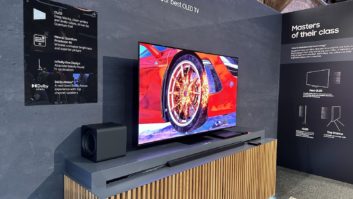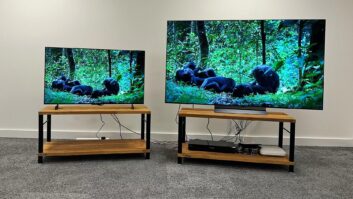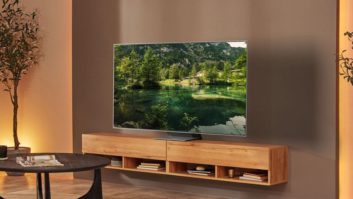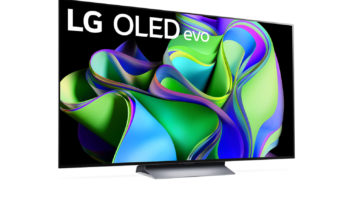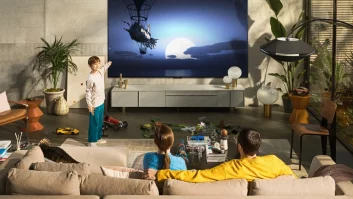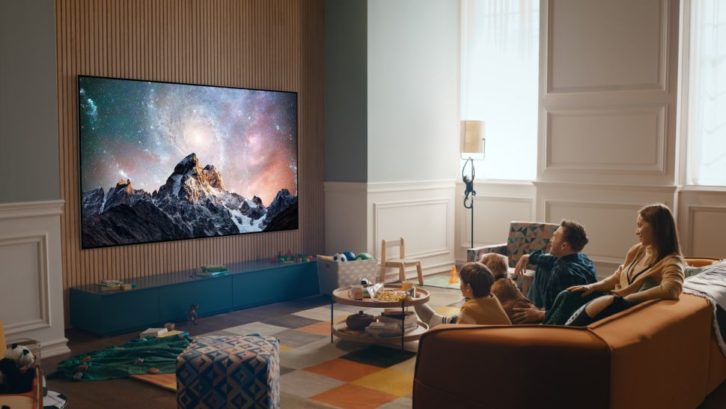
The current cost of living crisis is having some unexpected effects. While the price of so many essential goods keeps ratcheting up month after month, we’re actually seeing some of the most aggressive price drops on certain premium TVs in years, thanks to something of a perfect storm. And that’s news for those who still have the money for them, but want to spend cautiously.
In particular, it’s the price drops on the latest-gen LG C2, Samsung S95B and LG G2 TVs that really surprised me. These sets all use cutting-edge panels, yet their cost is falling faster than in previous years.
The perfect combination of factors to cause this is: people are less interested in buying premium products now that their household costs are spiking; people are also less interested in buying new TVs because so many of us bought them in the last two years, and now would rather spend money on being out and about; and Samsung launched its first QD-OLED TV, to compete with the best OLED TVs from LG, and would like you to pay attention to it please.
When you combine all these things, you’ve got two different companies battling each other for money, in a market that isn’t as hot for these products as it used to be. It’s a recipe for prices to fall faster than usual, and that’s exactly what we’re seeing.
The Samsung vs LG part of it is the most interesting. Samsung’s first 4K OLED TV, the S95B, is an incredible TV that launched at a high price, right in line with the also high-end LG G2. LG has dropped the price of the G2 by around 20% in the months since its launch, and so Samsung has followed suit by dropping the S95B by around 20% just weeks after its launch.
These have put price pressure on the LG C2, which is the more affordable option, but still contains a brighter new-generation screen than its predecessor, the LG C1, has. The more advanced TVs were dangerously close in price to the LG C2, so that’s dropped in price too, to keep it competitive.
The really nice knock-on effect of this is that the 42-inch LG C2 OLED TV – which is under much less price pressure because it has no direct rivals on the market at the same price – has dropped to a very reasonable price much quicker than we expected.
And it’s not going to end here, of course – these TVs have only just come out, so they’re going to be competing for your money for another 12 months most likely, yet they’re already shedding hundreds off their price.
Where do things go from here?
The price battle among high-end OLED TVs is obviously great news for anyone who wants to buy one, and it’ll keep getting hotter – Samsung has both production plans and new research that could make QD-OLED cheaper to manufacture.
But the real wins could come for those who want a more budget-friendly LED TV, if you buy later in the year.
That’s because there’s an even more perfect storm forming around LED/LCD TVs. For a start, you’ve got the exact same demand issues mentioned above where people are buying fewer TVs, but this has already caused the price of LCD screens to drop when building TVs, which means TVs being built today cost less (in some ways) to create than when models were announced earlier in the year. That means they’ll drop in price. So you’ve got a triple demand whammy there.
And then you’ve also got the downward price pressure being applied by the Samsung/LG OLED price battle towards less expensive TVs. The LG C2 price drop pushed it to the same price as the Samsung QN85B entry-level mini-LED TV, which means Samsung has dropped the price of that TV.
That means the price of more affordable TVs will drop in turn, like dominos. LG already dropped the price of its well-specced QNED80 LED TV for Prime Day, and we also saw over Prime Day that Hisense had dropped the price of one of its brand new affordable QLED TVs by around 30%.
Basically, we’re seeing TVs in June falling to prices that we would have more than expected in October or November – which means they’ll have fallen even further by then, which means that the Black Friday deals could be… very good.
Obviously, we’re in turbulent times, and lots could happen between now and then to change things. But for those who will have the money to spend on one of the best TVs this year, you’re going to be able to get a serious bargain, that much is certain.
This article originally appeared on techradar.com.
About the Author
Matt Bolton is TechRadar’s Senior Editor for TV and Audio, meaning he’s in charge of persuading our team of reviewers to watch gorgeous TVs and listen to fantastic speakers and headphones. It’s a tough task, as you can imagine. Matt has over a decade of experience in tech publishing, and previously ran the TV & audio coverage for our colleagues at T3.com, and before that he edited T3 magazine. During his career, he’s also contributed to places as varied as Creative Bloq, PC Gamer, PetsRadar, MacLife, and Edge. TV and movie nerdism is his speciality, and he goes to the cinema three times a week. He’s always happy to explain the virtues of Dolby Vision over a drink, but he might need to use props, like he’s explaining the offside rule.
See also: Surge Of TVs Being Sold On Promotion




